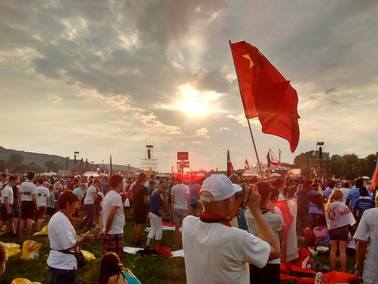 Who was it that claimed the Church is irrelevant to young people? Who was it that claimed young people did not seek or yearn for Christ? My experience of World Youth Day (WYD) has shown me otherwise. WYD is the largest gathering of Catholic young adults in a series of events sponsored by the Church. First initiated by St. John Paul II in 1985, WYD is celebrated at the diocesan level annually and at the international level every two to three years at different locations around the world. People do not attend as tourists, but rather as pilgrims, since the nature of the composite events are religious in character. Typically, pilgrims will arrange lodging in the host city before participating in the opening ceremonies, catechesis, and cultural exhibitions. Taking advantage of all the host city has to offer, pilgrims will usually also spend time exploring the region (especially churches), shopping for religious souvenirs, and tasting the local cuisine… and very rarely alone! As the locals are quick to notice, the host city will be absolutely inundated with pilgrim groups, each identified by various flags, shirts, and chants. In spite of the inconveniences experienced (such as crowds, traffic, and long lines), for the most part, the locals are excited to greet so many peoples; local businesses are especially happy to cater to the pilgrims’ needs. The focus of WYD events centers around the arrival of the pope: everyone wants to hear what the Holy Father has to say to the young pilgrims at various sites and events. Traditionally, the Holy Father will address crowds from his residence, during Masses, Stations of the Cross, and the overnight vigil during which millions camp out together in prayer. The conclusion of the Vigil Mass the following day signals the end of the official WYD program, though at that time the next host city is formally announced. I’ve been blessed to have been able to attend two World Youth Days, in Rio de Janeiro, Brazil in 2013 and in Kraków, Poland this year. So much more than a sightseeing trip, WYD for me has been all about seeing how God’s love for us manifests itself in each culture. Encountering millions of young believers (in addition to curious observers) who are inherently joyful in their witnesses to the Lord, I am especially delighted to see them interact with each other through songs, chants, prayers, and games during scheduled events or out in the streets. For me, some of the most powerful witnesses given happened outside of the official program (though seeing millions kneel before the Blessed Sacrament with lit candles during the vigil was indescribably moving). I remember seeing a group of Italian pilgrims run over to help a local disabled man carry groceries up a number of street stairs; another group immediately rushed to comfort a female pilgrim who had broken down during our 12 kilometer (about 7.5 miles) hike from the site of the overnight vigil. Simple acts of love like that really touched me as being authentically Christian: to love in even the smallest matters and, by doing so, answering the call given at the end of Mass, “Go in peace to love and serve the Lord.” Pope Francis gave many beautiful and encouraging addresses to those assembled in Poland, but I was most impacted by an action of his. At the beginning of Mass at the great Shrine of Czestochowa, Pope Francis missed a stair step and fell, thankfully uninjured. He later explained that, "I was watching (an image of) the Madonna, and I forgot the step." He literally fell for Our Lady. When I heard the news, I remembered a similar experience of my tripping on the stairs upon seeing a lovely peer of mine go by. To have that ineffably tender and peaceful focus on the Blessed Mother, to be in awe of the Virgin, reflects the perfect love God has for her and for each of us. WYD may have ended, but the mission entrusted to the young pilgrims by Pope Francis still burns in our hearts: Launch us on the adventure of mercy! Launch us on the adventure of building bridges and tearing down walls, barriers and barbed wire. Launch us on the adventure of helping the poor, those who feel lonely and abandoned, or no longer find meaning in their lives. Send us, like Mary of Bethany, to listen attentively to those we do not understand, those of other cultures and peoples, even those we are afraid of because we consider them a threat. Make us attentive to our elders, as Mary of Nazareth was to Elizabeth, in order to learn from their wisdom. May each of us always endeavor to accomplish it! To learn more about World Youth Day, please click here. For more World Youth Day reflections, please click here.
0 Comments
A few weeks ago, I wrote about Bl. Pier Georgio Frassati. In reading about him, I also came across St. Kateri Tekawitha as another patron saint of World Youth Day (WYD). I quickly delved into her fascinating life. A woman who defied others to remain true to her beliefs, St. Kateri Tekakwitha has become known as the “Lily of the Mohawks.”
St. Kateri Tekakwitha was born in 1656 to a Mohawk father and a Christian Algonquin mother in what is now upstate New York, near Albany. While a young girl, Kateri contracted smallpox. Although she survived the disease, she was left with poor eyesight and scars on her face and eyes. Because of this, she was given the name "Tekakwitha," which in Mohawk means, "She bumps into things." When she was 8 years old, her foster family arranged for Kateri to be betrothed, as per Iroquois tradition. Kateri refused to marry, stating that she wanted to dedicate her life to God. At the age of 18, she started to learn more about the Christian faith through Jesuit missionary Father Jacques de Lamberville. Her uncle eventually gave her permission to become a Christian as long as she did not leave the village. Kateri began incorporating aboriginal concepts into her understanding of Christianity, such as the presence of God in nature. At the age of 21, Kateri was baptized and received First Holy Communion on Christmas Day in 1677. After being rejected by her community for her conversion, she walked to the St. Francis Xavier Mission near Montreal, Canada, to join a community of Native American women who had also converted to Christianity. Kateri, who attributed her name to Catherine of Siena at the time of her baptism, died on April 17th, 1680. Tradition holds that her dying words were "Jesus, I love you” and that after her death, the scars on Kateri’s body began to heal—restoring the radiant appearance of her face. She was canonized on October 21st, 2012 by Pope Benedict XVI in Rome. She has been named the Protectress of Canada and patroness of the environment, environmentalists, Native Americans, and several diocese, to name a few. As someone who is interested in Native American culture and the environment, I enjoyed learning about Kateri and her dedication to the natural world and her faith. I was also surprised to learn that she was the first Native American saint in the Catholic Church. It was interesting to learn about her dedication and devotion to her faith, even when it meant rejection from her community. Kateri bravely stayed firm to her belief in Christ when she was pressured to reject her faith in Christ and adhere to the traditional native beliefs. She knew that her faith in Jesus was not misplaced, so these demands only reaffirmed her beliefs. Kateri blended her faith in Christ with a respect for nature. She maintained a deep devotion to nature and its beauty after her conversion. In his second encyclical, Laudato Si, Pope Francis emphasized the imminent need of protecting the environment. I also invite you to imitate Kateri’s respect of nature. I have personally found this greater call of environmentalism to be reinvigorating. As the world’s young people prepare to gather in Poland for WYD, we realize in a special way that we are all on this planet together. We are called to see how our actions affect the world, and that we can work together for a stronger response to protect God’s great gift of creation. The air, water, trees, birds, plants, and other animals are not confined to national borders and neither should our approach to protecting the earth. Kateri inspires me to take action to protect the environment. If we each do our part by recycling, taking public transportation, and keeping vigilant about our energy consumption, then we have a greater chance of protecting our world. In addition, we are called to educate ourselves by reading more about environmental issues. I recommend starting with Laudato Si. As we pass down our faith from generation to generation, so do we also pass down our responsibility towards this Earth. It can be hard to keep in mind that this is the same Earth that Jesus Christ walked on. Kateri, “Lily of the Mohawks,” combines this love of nature and Christ. It is my hope, as we approach WYD later this month, that we will also consider how we are protecting the environment. May we be inspired by this phenomenal saint. To learn more about St. Kateri Tekakwitha, click here. For more information on World Youth Day 2016, click here. 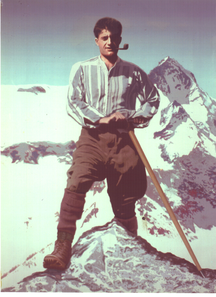 This upcoming summer, the Church will be celebrating World Youth Day in Kraków. The Church invites all of us, not just those pilgrims in Poland, to celebrate and participate in this great event. The Catholic Apostolate Center announced a few weeks ago that it will be partnering with the USCCB and the Archdiocese of Washington in a number of World Youth Day celebrations both here and abroad, including the event “Kraków in the Capital,” which celebrates World Youth Day stateside in Washington, D.C. As I was helping prepare for the celebration, I came across the fact that the body of Bl. Pier Giorgio Frassati will be present for the World Youth Day celebrations in Kraków. I knew very little about this extraordinary young man and I decided that I needed to learn about him. I feel like my introduction to him was perfect timing. Much like Pier Giorgio, I have a great love for the outdoors and for sports. I will gladly spend hours watching games and discussing Sidney Crosby and my Pittsburgh Penguins, the New York Giants, and why the 1969 Mets were the greatest World Series team. Some of my fondest memories include hiking in the Scottish Highlands, climbing mountains in the Adirondacks, and backpacking in New Mexico. I've always regarded these as great activities, but found it challenging to incorporate them into my spiritual life. I knew that being in nature connected me closer to God, but did not know how that could affect my spiritual journey. This young man showed me how. Pier Giorgio Frassati was born to a prominent family in Torino, Italy on April 6, 1901. His father was the founder of the La Stampa national newspaper (which is still in print today) and was very active in national politics as a member of left wing parties. Growing up, Pier Giorgio took an active role in his life of faith and developed a deep spiritual life. He could often be found praying before the Blessed Sacrament and reflecting on the Beatitudes. During World War I, he served the sick and helped servicemen reintegrate back into society. Like his father, Pier Giorgio got involved with politics but joined the People's Party, which was based on Rerum Novarum and Catholic Social Teaching. He would often be found climbing mountains, going to the theater and to the opera, but never let these pastimes interrupt his service to the poor and the outcast. He would be seen giving bread and sometimes his own clothing to the beggars in the streets. While still a young man, Pier Giorgio was photographed climbing a mountain. He signed the photograph 'Verso L'Alto', which means 'Go to the Heights'. This would serve as his personal motto and means more than simply mountain climbing. It is also a figure speech referring to the climb towards Christ. Pier Giorgio felt that he was drawn to the heights of the Beatitudes and to the Blessed Sacrament. He encouraged all those around him to also climb to these heights of the spiritual life. Pier Giorgio's family disapproved of his activities and of his faith. They could not understand Pier Giorgio's passion for the poor and for the spiritual life. As he grew older, he grew deeper in his devotion and eventually joined the Third Order of Saint Dominic (Lay Dominicans) in 1922. Before graduating from university, Pier Giorgio contracted a very aggressive form of polio and grew extremely ill. It was during this short period that his grandmother passed away, drawing ire from his family because they felt that Pier Giorgio did not show enough grief for her death due to his own illness. On the night before Pier Giorgio himself passed away, he requested that his medication be given to a poor man he had been visiting. Pier Giorgio succumbed to his illness on July 24, 1925. His family expected very few people to come to his funeral, only some family and personal friends. When the family departed for the funeral, they were completely stunned to find the streets completely lined with thousands of people whom he had cared for. Simultaneously, the people lining the streets were shocked to find that he was from such a prominent family. Pier Giorgio's legacy continued not only in Torino, but also throughout the world. While visiting Torino in 1989, Saint John Paul II made a pilgrimage to his tomb. A year later, on May 20th, Pier Giorgio Frassati was beatified in Saint Peter Square. His body was then moved from the family plot and reinterred in the Cathedral of Torino for pilgrims to visit. St. John Paul II said, "He (Frassati) testifies that holiness is possible for everyone". In researching his life, I have found encouragement from this great man. He shows us how to have zeal not only for life, but also for our faith. He gives us courage and inspiration. As I prepare for the World Youth Day celebrations, I look forward to diving deeper into the life and spirituality of Pier Giorgio. Blessed Pier Giorgio Frassati, pray for us! Next Tuesday at approximately 4:00 pm, Pope Francis will touch down at Joint Base Andrews in Prince George's County, Maryland. This Apostolic Journey to the United States of America includes visits to three important American cities: Washington, D.C., New York City, and Philadelphia. I am excited to return next week to the campus of my alma mater, The Catholic University of America, where Pope Francis will celebrate the Mass of Canonization of Junipero Serra on the steps of the Basilica of the National Shrine of the Immaculate Conception. This Mass will make history, as it is the first canonization Mass to take place on U.S. soil and the first papal Mass to take place on a U.S. university campus. As a seminarian, I will join thousands of my brother seminarians and those in religious formation in the Great Upper Church of the National Shrine for the Mass of Canonization. Although details are sparse, it is expected that Pope Francis will be greeted on the front steps of the National Shrine and then proceed down the center aisle before celebrating Mass on the steps of the National Shrine overlooking Catholic University. The Apostolic Journey of Pope Francis has been described as an "encounter," not simply a trip. The secular media has focused on his address to Congress, the security concerns related to the World Meeting of Families in Philadelphia, and the associated merchandise. (I must admit that I'll be on the lookout for some fun Papal Visit trinkets as souvenirs!) I think there is something to be said, however, about this apostolic journey as an "encounter." During an audience with seminarians and novices in July 2013, Pope Francis addressed them with these words, which are certainly applicable to us all: I would like to tell you: come out of yourselves to proclaim the Gospel, but to do this you must come out of yourselves to encounter Jesus. There are two ways out: one towards the encounter with Jesus, towards transcendence; the other towards others in order to proclaim Jesus. These two go hand in hand. If you only take one of them, that is no good! Encountering the Holy Father is a way to both deepen our faith and evangelize. This has been actualized in the "Walk with Francis" movement, which encourages people to join the Holy Father in prayer and service. The Holy Father has encouraged us to join in prayer not only for his Apostolic Journey to the United States, but also that his message of peace, mercy, discipleship, and love might touch the hearts of both believers and non-believers alike. The theme of the Apostolic Journey, "Love is Our Mission," seems to indicate what it is that the Holy Father wishes to convey to us during his first visit to the United States. His words on love and mercy are poignant: May a powerful gust of holiness sweep through all the Americas... We ask the Risen Jesus, Lord of all ages, that the life of our American continent may be rooted ever more deeply in the Gospel it has received; that Christ may be ever more present in the lives of individuals, families, peoples and nations, for the greater glory of God. We pray, too, that this glory may be manifested in the culture of life, brotherhood, solidarity, peace and justice, with a preferential and concrete love for the poor, through the witness of Christians of various confessions and communities, together with believers of other religious traditions, and people of upright conscience and good will. Lord Jesus, we are merely your missionary disciples, your humble co-workers so that your Kingdom may come! We look forward to welcoming you to the United States, Holy Father, and we join in walking with you in prayer and service that we might become witnesses to love and ministers of God's mercy. Pope Francis told the young people gathered at World Youth Day in Rio de Janeiro that "evangelizing means bearing personal witness to the love of God, it is overcoming our selfishness, it is serving by bending down to wash the feet of our brethren, as Jesus did." By serving others and witnessing to the love of God, may we be inspired to encounter the Lord in our sisters and brothers. May this encounter with Pope Francis in the United States inspire us all to answer the Holy Father's call to evangelize. For more information on Pope Francis' Apostolic Journey to the United States, please visit our Papal Visit Portal.
Just last summer on Copacabana Beach, at World Youth Day, Pope Francis remarked, “The Church is counting on you... The Pope is counting on you!” Youth in the Church today often feel marginalized, alone, or worst of all- downright ignored. However, it is our calling as baptized Catholics to reverse this trend, and in rural southern Indiana, an unlikely group of Catholics are striving to do just that.
I spent the summer at Saint Meinrad Archabbey, a Benedictine monastery in Indiana, working for One Bread One Cup, a liturgical leadership youth program that forms high school students in the liturgy and helps them to integrate the Word, Sacrament, and Mission of the Church into their lives. Over seventy monks welcomed twenty college interns and hundreds of high school students and youth ministers to their home. However, they did much more than welcome us to their home. For centuries, Benedictine monks have been known in a special way as guardians of the rich liturgical patrimony of the Church. And guess what they did with it? They gave it away, they gave the youth the most precious gift that they have, telling them to go back to their parishes and implement what they have been taught, ranging from how to be an EMHC, to Cantor, to liturgical artist. However, it was not so much being taught how to do these things, as much as helping the youth to realize and use their God given gifts to build up His Kingdom. Whenever I think of the mission of One Bread, One Cup, I always see its mission epitomized by Matthew, Chapter Ten, when Jesus commissions and sends out the apostles to minister, to go and proclaim the kingdom of heaven. An important aspect of the New Evangelization is helping youth rediscover or discover for the first time the richness of the Gospel. However, once teens join a youth group and appear to begin to be engaged, what happens then? Pope Francis at World Youth Day said, “Sharing the experience of faith, bearing witness to the faith, proclaiming the Gospel: this is a command that the Lord entrusts to the whole Church, and that includes you…” Therefore, part of the whole Church’s mission is to make it known that teenagers are not only called to be disciples of Jesus, but to be apostles; to partake in the apostolic mission and responsibility of Jesus and the Church. Spending the summer ministering to older high school students from across America, from Louisiana to Michigan, has shown me one very effective way at helping youth to recognize their calling to be apostles, and to discover and then use their God given talents to participate in a certain liturgical ministry. Everything the Church does flows from one thing- the celebration of the Eucharist. Therefore, if we are trying to keep youth in the Church, or help them to realize their calling to be apostles, why would we not involve the youth in the most important work that the Church does? If youth understand the liturgy and participate in it, then they will be able to understand and participate in the Church, because the liturgy is the greatest teaching tool the Church has. “Renewing the Vision,” a landmark document on youth ministry by the USCCB says evangelization, “calls young people to be evangelizers of other young people, their families, and the community.” Once youth become involved in the liturgy and understand it, it becomes the natural next step for them to evangelize others and in my experiences and probably yours, it becomes much more likely that they will feel a part of the Church and stay in the Church. Conor Boland is a College Ministerial Intern for One Bread One Cup, at Saint Meinrad Seminary & School of Theology and is an undergraduate at the Catholic University of America. "Shock." "Disbelief." "Uncertainty." "Bittersweet." The above descriptors were all used by friends to describe their reaction to last week’s resignation announcement by Pope Benedict XVI. I awoke at 6:02am last Monday to several text messages from friends informing me of the reported, yet still unconfirmed, “shot heard round the world.” The resignation of our Holy Father, at first, felt like the loss of a grandparent that you have grown up with; I have grown up in the Church of Pope Benedict XVI. After letting the news sink in over the last week, I have found some inspiration in Psalm 30:6, which speaks of sorrow leading to rejoicing: “Weeping may linger for the night, but joy comes with the morning.” My sense of loss has been transformed into a greater sense of admiration for a man that I have never met, yet have such a deep respect for. For lack of something more appropriate to say, I offer to you the words of the Holy Father during his homily at the Final Mass of the 26th World Youth Day in Madrid, Spain on August 21, 2011. May his words serve as a challenge to all of us during the last days of his momentous pontificate. Oremus pro Pontifice et pro invicem. Dear young friends, as the Successor of Peter, let me urge you to strengthen this faith which has been handed down to us from the time of the Apostles. Make Christ, the Son of God, the center of your life. But let me also remind you that following Jesus in faith means walking at his side in the communion of the Church. We cannot follow Jesus on our own. Anyone who would be tempted to do so “on his own”, or to approach the life of faith with that kind of individualism so prevalent today, will risk never truly encountering Jesus, or will end up following a counterfeit Jesus. Having faith means drawing support from the faith of your brothers and sisters, even as your own faith serves as a support for the faith of others. I ask you, dear friends, to love the Church which brought you to birth in the faith, which helped you to grow in the knowledge of Christ and which led you to discover the beauty of his love. Growing in friendship with Christ necessarily means recognizing the importance of joyful participation in the life of your parishes, communities and movements, as well as the celebration of Sunday Mass, frequent reception of the sacrament of Reconciliation, and the cultivation of personal prayer and meditation on God’s word. In closing, I share with you a rendition of Tu es Petrus, composed by Cardinal Domenico Bartolucci, Director Emeritus of the Sistine Chapel Choir, performed during World Youth Day in Madrid. Alex R. Boucher is the Program & Operations Coordinator for the Catholic Apostolate Center. Follow Alex on Twitter at @AlexBoucher.
|
Details
Archives
April 2024
Categories
All
|
About |
Media |
© COPYRIGHT 2024 | ALL RIGHTS RESERVED

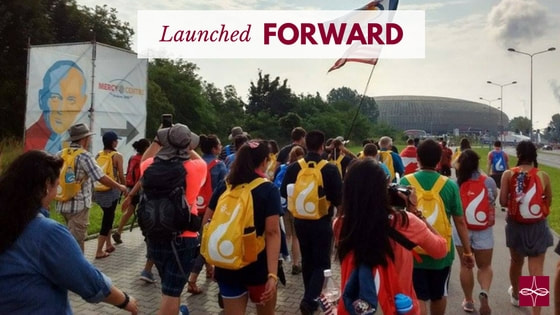
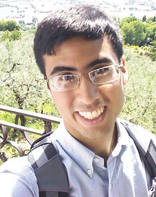

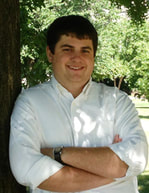
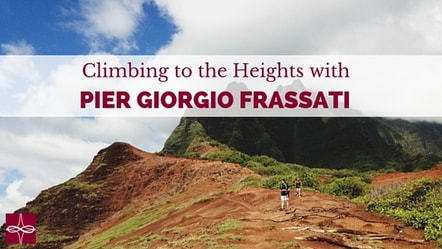
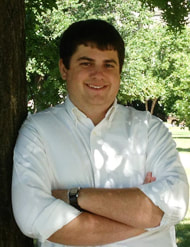
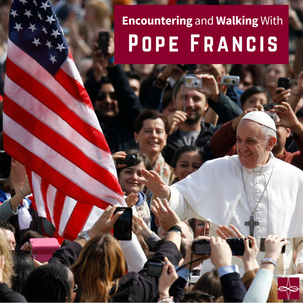

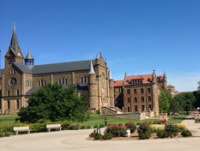
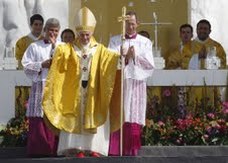
 RSS Feed
RSS Feed